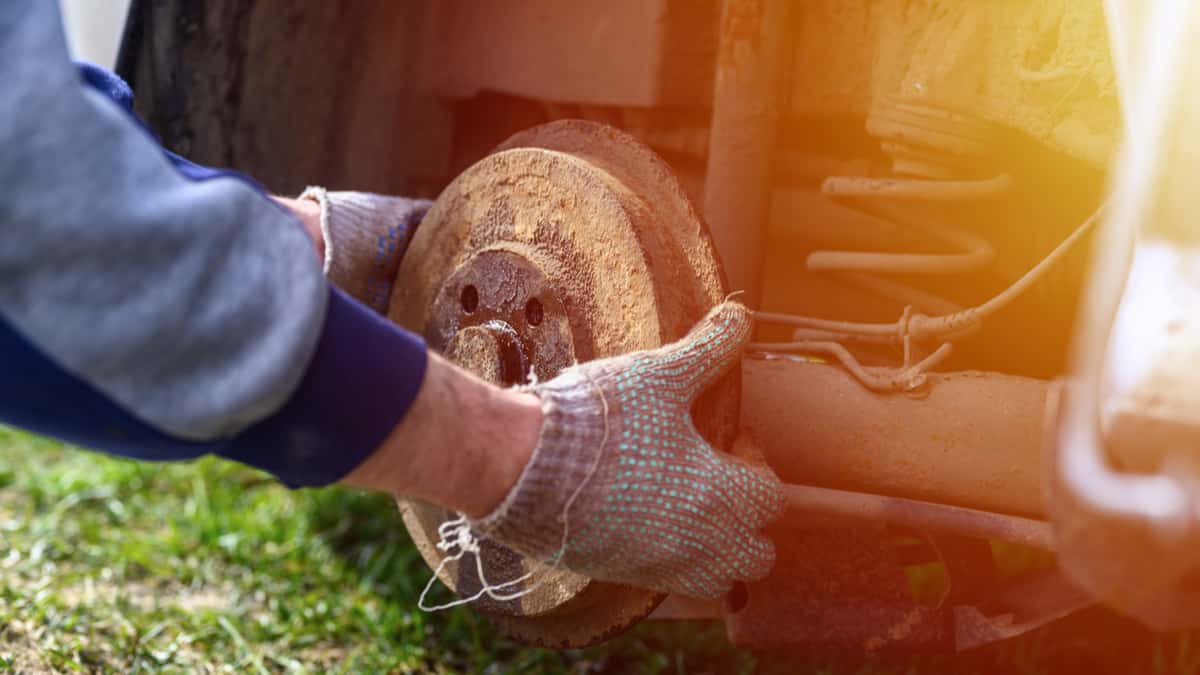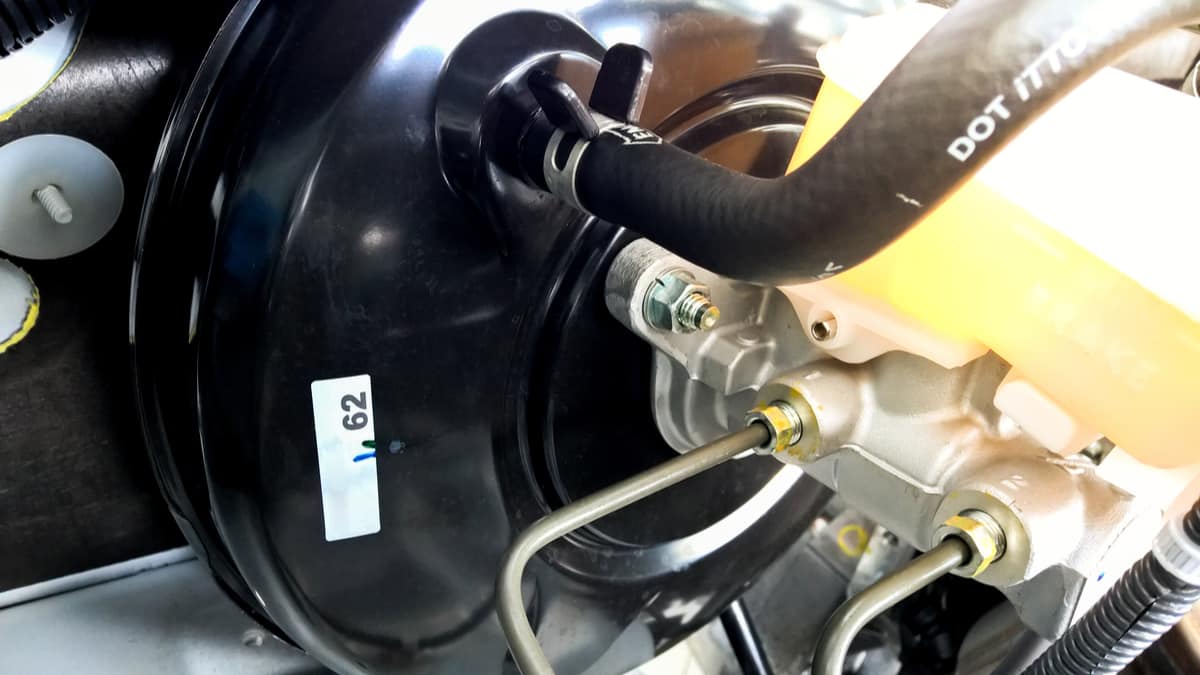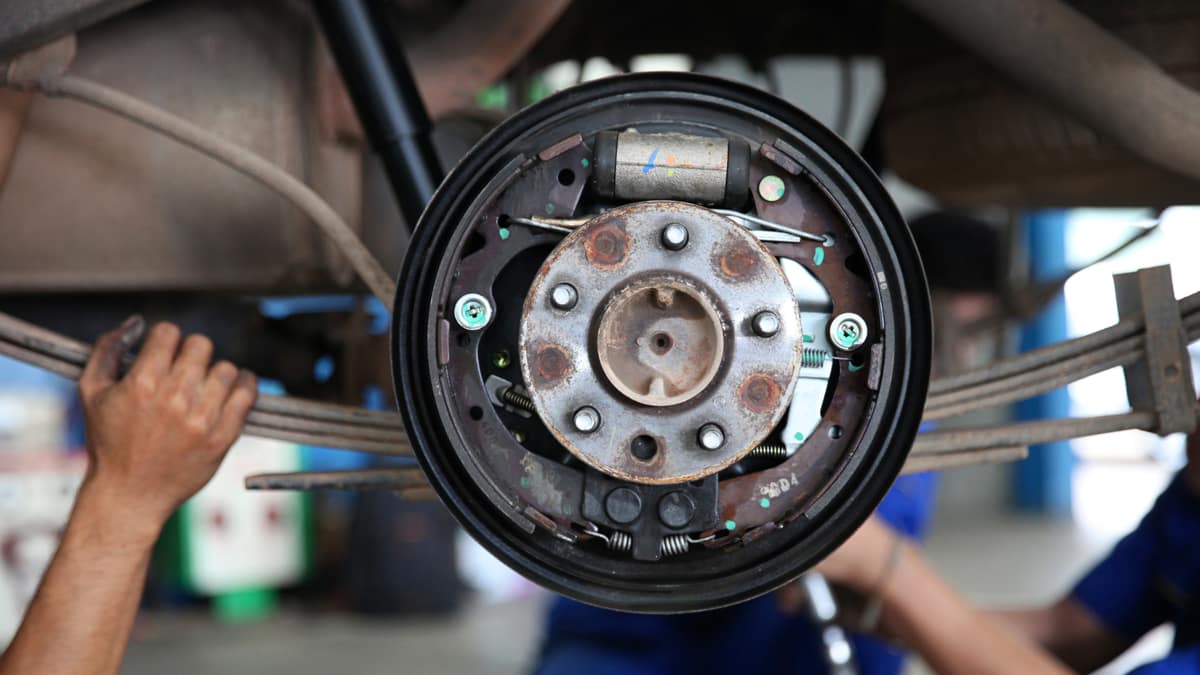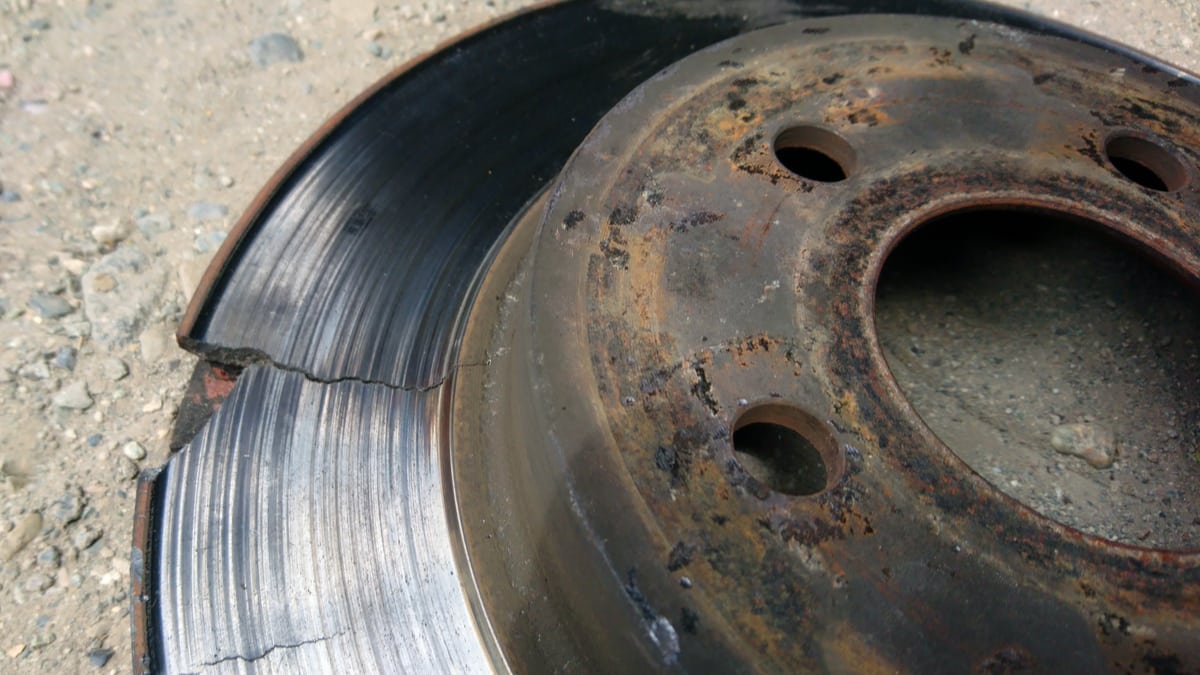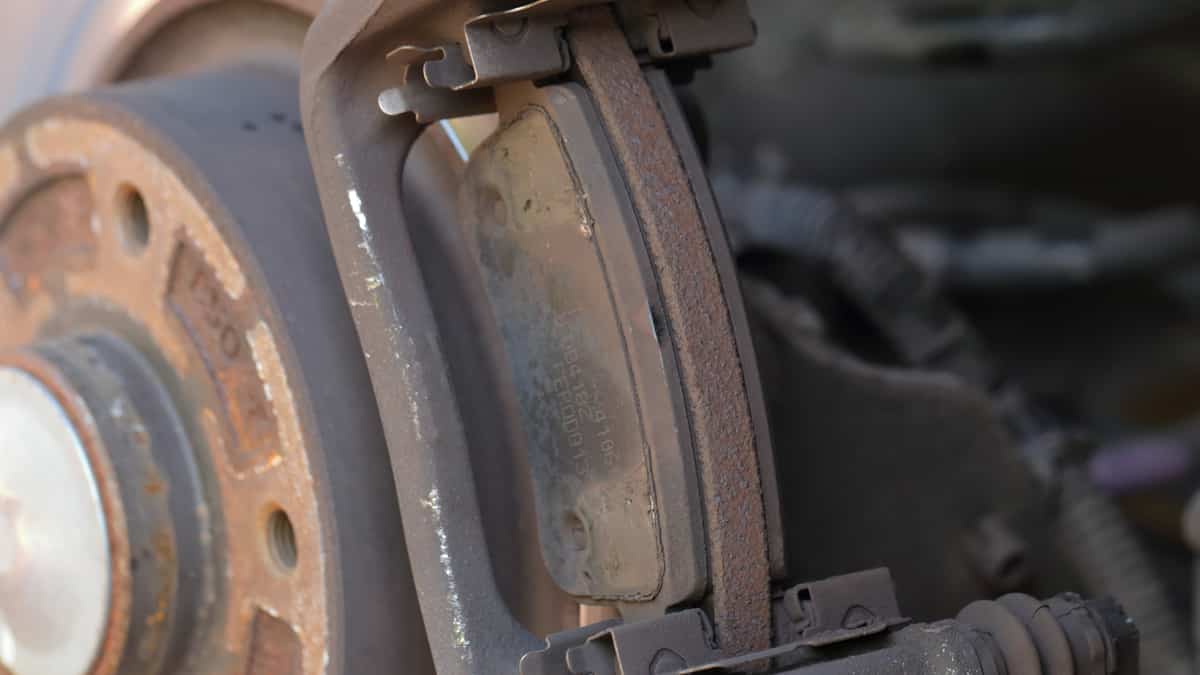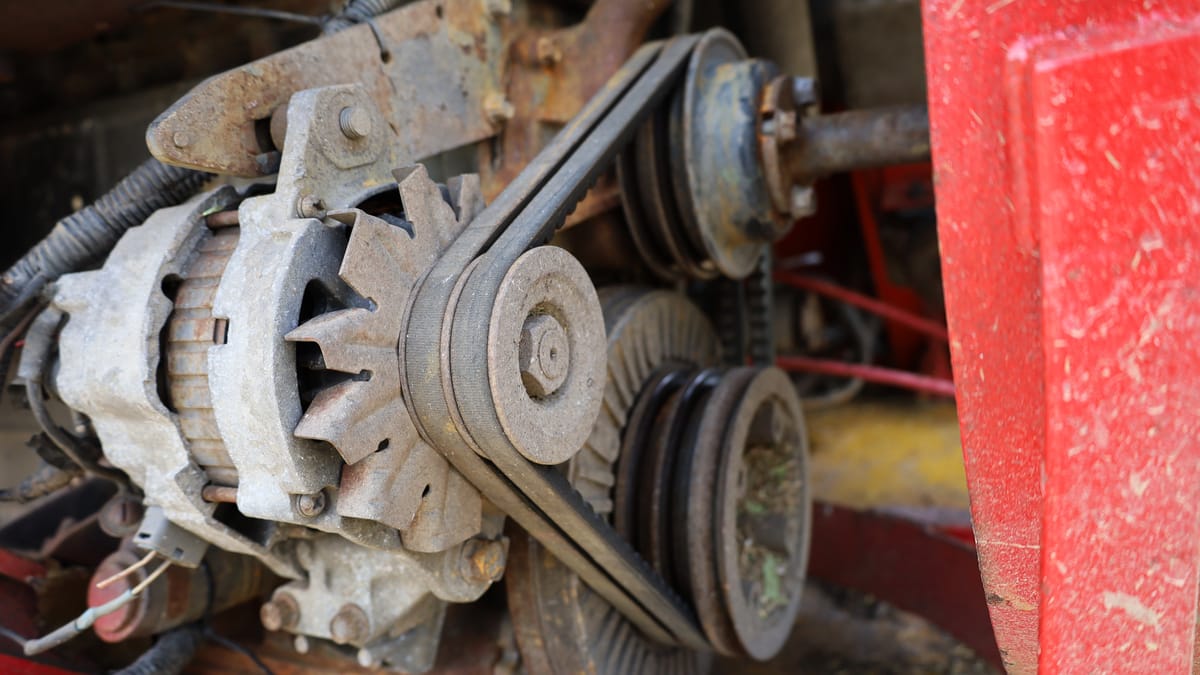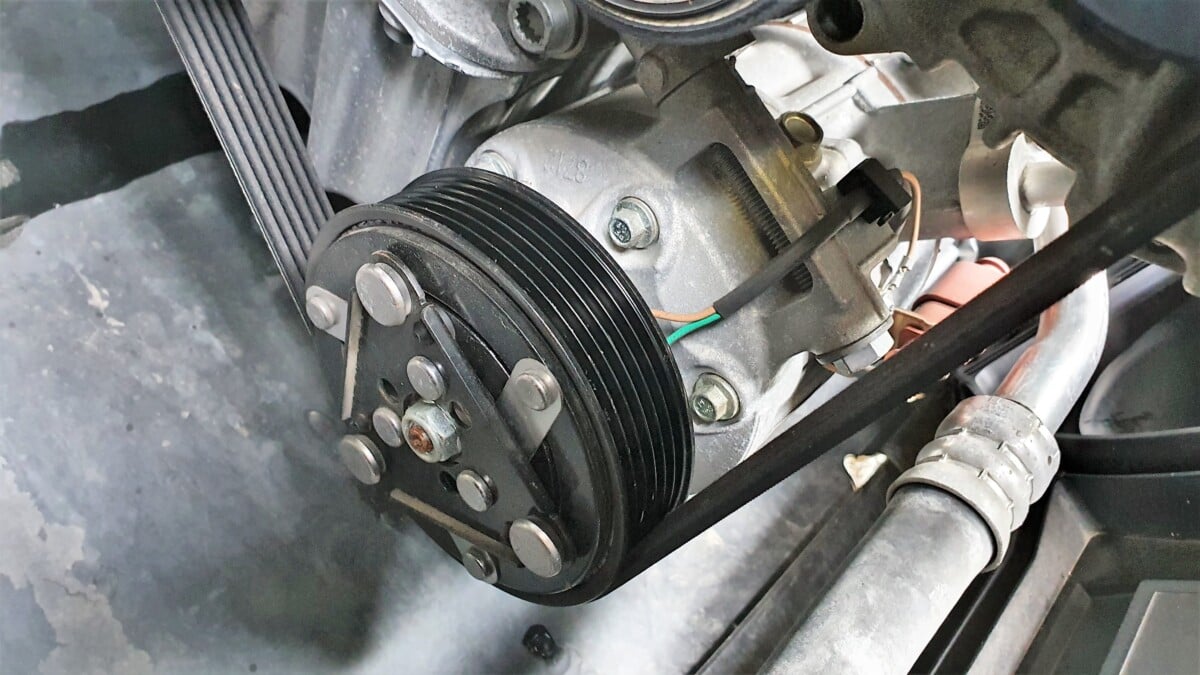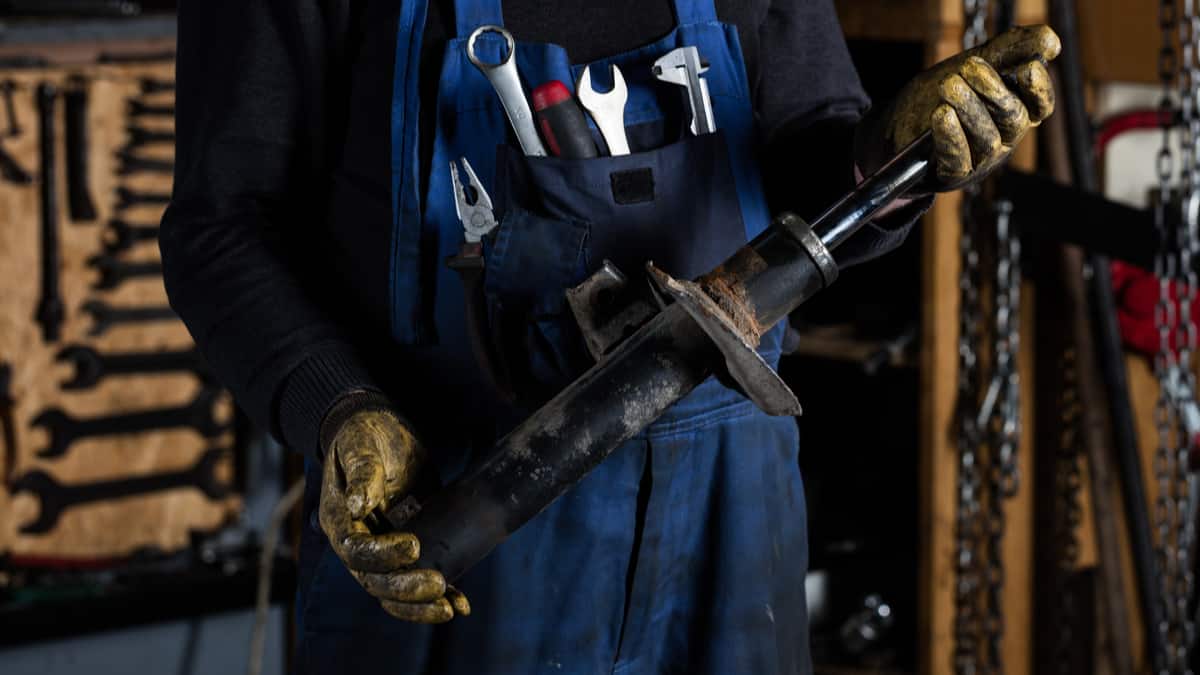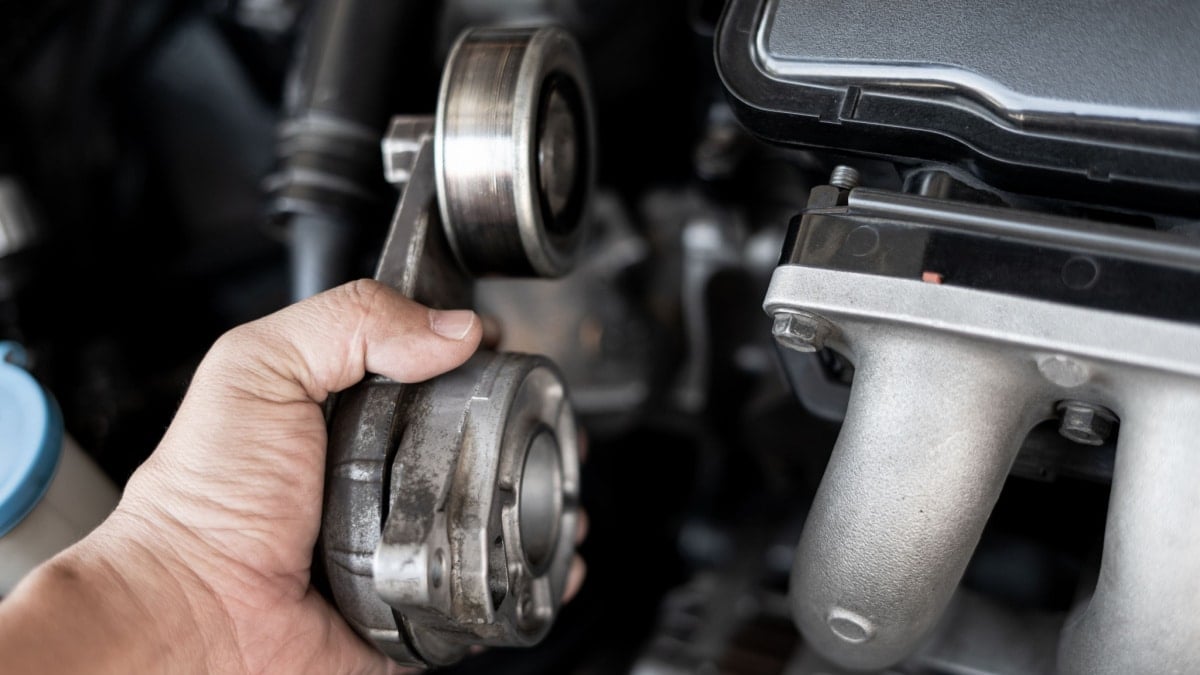Not as many cars are equipped with drum brakes these days, but it used to be a popular option for automobiles. If you drive a car equipped with this system, it’s important to know the symptoms of bad brake drums.
In this guide, we look closer at the symptoms that occur when the brake drums go bad. We also examine the purpose of brake drums, their location and the average replacement cost. By the end of the article, you will know how to test the brake drums and you’ll gain some answers to your top questions.
Symptoms Of Bad Brake Drums
When the brake drums start to fail, you will notice more noise when braking. The pedal will also get soft or spongy, and there will be a decrease in stopping power. You could also notice a vibrating brake pedal, uneven braking power and there could be issues with the parking brake.
Take a look at these six symptoms in greater detail.
1. Noise When Braking

Often, the first sign of a problem is excessive noise when you brake. Once the shoe’s friction material is worn, the metal backing comes in contact with the drum, creating a scraping or grinding noise after applying the brakes.
This noise can also occur if any of the brake hardware has gotten loose or is broken, such as the retaining springs. Debris, such as rocks and dirt, can also get into the brake drum and create a weird noise.
2. Soft Or Spongy Brake Pedal

If the brake drum becomes worn or cracked, the pedal may feel spongy when you push it down. However, this problem is rarer than some of the others, as the drum doesn’t often break.
Instead, the soft pedal is most often caused by air in the hydraulic system. You would need to get the air out of the system for the brakes to regain normal pressure.
3. Decreased Braking Power

When the brake shoes and drums are worn, you may notice a harder time getting the vehicle to stop. With an inappropriate amount of friction material present, it becomes more difficult to stop the wheels.
Over time, the stopping distances will progressively get worse and worse. That’s why it’s better to have the problem resolved before you rear-end another vehicle.
4. Vibrating Brake Pedal
If the brake drums become warped or out of round, they won’t make adequate contact with the shoes. Instead of squeezing against the drum, the shoes hit some areas harder than others, resulting in a vibration that can be felt through the pedal.
It’s important to note that drum brakes don’t suffer from the same pulsation as the disc brakes. Brake pads and rotors usually have far more vibrations. That’s why you want to have the drums machined or replaced at the first sign of pulsation.
5. Parking Brake Issues
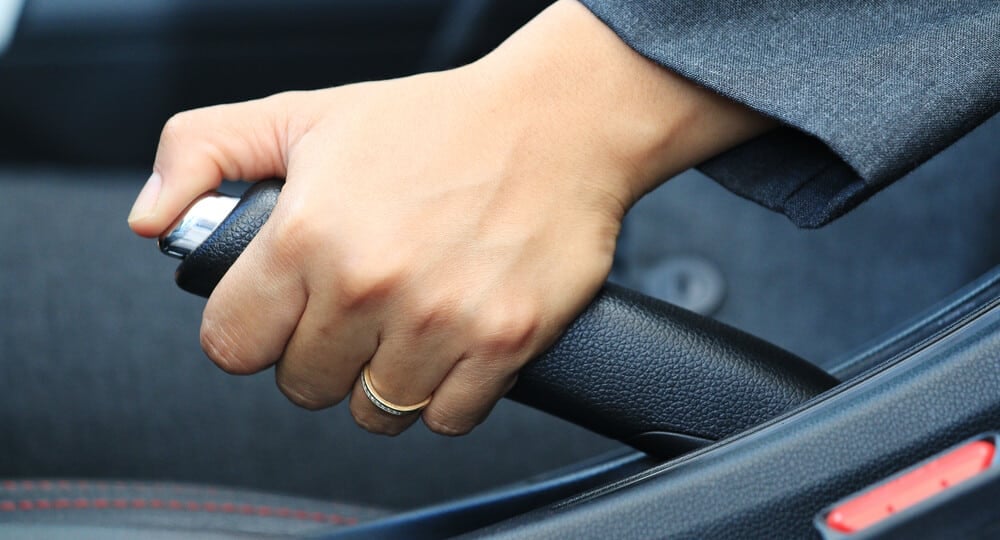
The parking brake is connected to the rear brakes. If you have failing or bad drum brakes in the back, this emergency brake capacity can also suffer.
You may notice that the parking brake is not holding the vehicle steadily. However, the problem could be with the parking brake itself, such as a cable that needs adjustments, so a further diagnosis is needed.
6. Uneven Braking Power
There are many reasons for a car to pull to one side, with a possibility being that the drum brakes are bad. However, brakes usually wear evenly, which would cause performance issues all the way around.
You may also want to consider a possible suspension problem combined with uneven tire tread. Either way, you want to have the problem looked at so you can be safer on the road.
What’s The Function Of A Brake Drum?
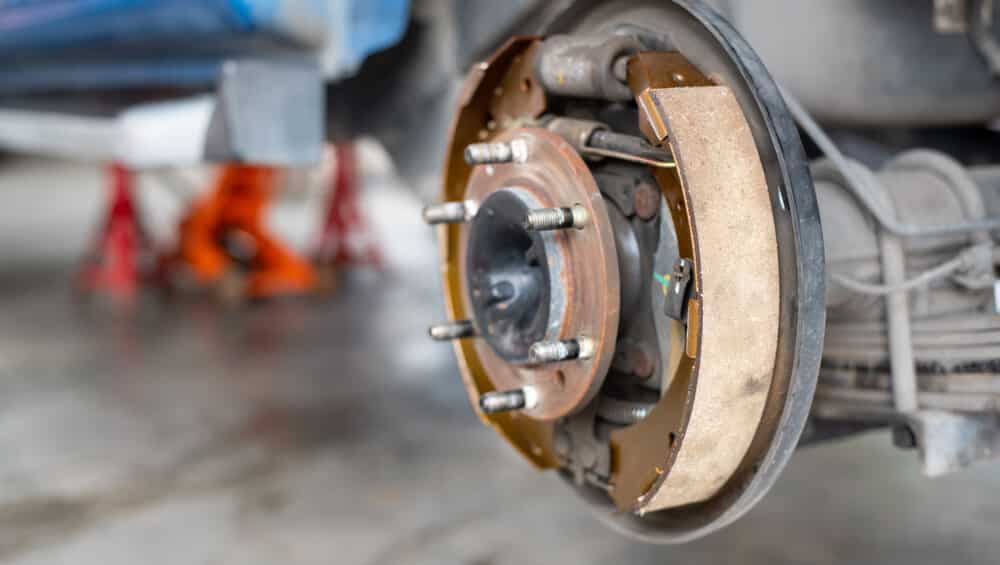
Brake drums rotate in line with the wheel hub, rim and tire. Whenever the vehicle is moving, the drum is also rotating alongside the wheel, where it is connected.
Brake shoes are secured to a steel backing plate, bolted to the knuckle or axle assembly. As you push down on the brake pedal, hydraulic fluid is released into the wheel cylinder. The shoes expand, forcing the lining to make contact with the brake drum. This action slows down the drum and wheel at the same time.
Where Are The Brake Drums Located?
Drum brakes used to be found on all four wheels of the car, but that’s no longer normally the case. While many vehicles have moved to four-wheel disc brakes, there are still some using drum brakes in the rear.
Brake drums are made from metal and are circular. They house the brake shoes but aren’t stationary as the shoes. Instead, the drum spins in line with the wheels until the shoes are applied.
How Do You Test The Brake Drums?
If you want to check the drums yourself, you only need some minor equipment. Here are some steps to consider.
- Jack up the vehicle and secure it on stands.
- Remove the wheels and brake drums. If you’ve recently driven, be careful touching the brakes as they can be hot.
- Inspect the wheel cylinders and linings. If you see a substance on the backing plate, you need to figure out if the brake fluid is leaking or if it is grease. You can wash brake fluid away, but you want to find out where it’s leaking from.
- Inspect the thickness of the brake shoe lining. If they are 1/8” or less thick, it’s time for a replacement.
- Inspect the drum for any signs of wear. If you see score marks, you should have the drums machined or replaced.
You should have your service manual handy and reference the manufacturer’s specs for the braking system. You also want to follow any additional guidance provided by the manufacturer.
If you aren’t familiar with the drum brake system, we strongly encourage you to pay a mechanic for the diagnosis and repairs. As professionals, we’ve seen far too many people attempt to work on their own brakes, only for it to end up in a disaster.
How Much Does It Cost To Replace The Brake Drums?
On average, expect to spend $225 to $375 to replace the brake drums. You may spend $150 to $250 on the parts and another $75 to $200 on the labor. If you have mechanical knowledge and some simple tools, you could replace the drum brakes yourself and save a little cash.
You should always replace the drum brakes in pairs. So if the right side needs to be replaced, it’s best to do the left as well. By changing them both out, you ensure that the performance remains the same across the axle. Additionally, you may consider replacing the brake shoes and cylinders at the same time while everything is apart.
To get a better estimate, you need to consider a few factors, including:
- Make/model of your car: Luxury cars tend to have more expensive parts. Additionally, if the brake drums are hard to work on, there will be a higher labor charge.
- Labor costs: Every region has its own average labor cost for mechanics. If you live in an area where it’s cheaper to hire a mechanic, you may not spend as much as you thought.
- Aftermarket vs. OEM: You can choose aftermarket brakes if you aren’t worried about having the same quality as from the factory. This choice saves you a little bit of money but often doesn’t have the same guarantee as the OEM parts.
On the bright side, you shouldn’t have to change the drums very often. With many drums lasting 200,000 miles while driving in optimal conditions, this is something you may never deal with at all.
When you purchase your kit for replacement, make sure it includes all of the hardware you will need. Otherwise, you need to purchase these items separately.
Are brake drums hard to replace?
It’s not as complicated as you might think. While they are different from disc brakes, they tend to be just as easy to work on. If you have some mechanical knowledge and the tools to get the job done, it may only take you an hour or less. Otherwise, it’s best to trust the professionals with the job.
How many years do drum brakes last?
The drums themselves should easily last 150,000 to 200,000 miles if you take care of your vehicle. The brake shoes, on the other hand, need to be replaced more often. You may need to install new brake shoes every 30,000 to 40,000 miles, depending on the conditions you drive in.
Are drums more expensive than rotors?
Disc brakes are more expensive than drum brakes, but not by a substantial amount. If you have to replace a set of rotors or drums, you will spend less on the latter in most cases. Additionally, the drums don’t need to be replaced as often as the rotors do on a disc brake system.
How many drum brakes does a car have?
All cars come installed with four brakes, one set for each wheel. If the car has four-wheel disc brakes, there are no drums. Older cars were often manufactured with drum brakes on all four wheels. Today, if drum brakes are installed on a car, they are usually only used on the back two wheels.
Do worn brake drums make noise?
They can make scratching or grinding noise if they are warped and the shoes aren’t making contact correctly. You may also hear some strange noises when the shoes need to be replaced. At the first sign of trouble from the drum brakes, it’s best to inspect them to ensure your on-road safety.
What is the biggest problem with drum brakes?
While drum brakes were considered the go-to for older vehicles, the design contains several flaws. First, they overheat faster than disc brakes, leading to more frequent fade. They also take longer to dry off once moisture becomes a problem. Finally, they are heavier than disc brakes, adding more weight to the car.
Even though drum brakes are becoming less popular, there are still many cars with them installed. If you own one of these cars, you want to know how to recognize the symptoms that they are going bad and learn how to replace them yourself to save money. The good news is that if you are familiar with disc brakes, transitioning to the drums shouldn’t be too complicated for you.
You can easily check the drums and shoes regularly to watch for signs of damage. Because the drums and shoes are so important for stopping the vehicle in time, you should never put off having them replaced once you recognize they are worn.
Categories: Brakes
